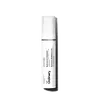What's inside
What's inside
 Key Ingredients
Key Ingredients

 Benefits
Benefits

 Concerns
Concerns

 Ingredients Side-by-side
Ingredients Side-by-side

Water
Skin ConditioningCaprylic/Capric Triglyceride
MaskingIsododecane
EmollientDimethicone
EmollientGlycerin
HumectantPentylene Glycol
Skin ConditioningPropylene Glycol
HumectantSqualane
EmollientGlyceryl Stearate
EmollientPEG-100 Stearate
Hexylresorcinol
Antimicrobial1,2-Hexanediol
Skin ConditioningAlgin
MaskingArachidyl Alcohol
EmollientArachidyl Glucoside
EmulsifyingBehenyl Alcohol
EmollientBenzoic Acid
MaskingBHT
AntioxidantCaprylyl Glycol
EmollientCarbomer
Emulsion StabilisingDimethicone Crosspolymer
Emulsion StabilisingDimethiconol
EmollientParfum
MaskingHydrogenated Polyisobutene
EmollientHydroxyethyl Acrylate/Sodium Acryloyldimethyl Taurate Copolymer
Emulsion StabilisingPapain
Skin ConditioningPEG-7 Trimethylolpropane Coconut Ether
EmulsifyingCI 17200
Cosmetic ColorantRetinal
Skin ConditioningSodium Hydroxide
BufferingSorbitan Isostearate
EmulsifyingStearyl Alcohol
EmollientCI 77891
Cosmetic ColorantXanthan Gum
EmulsifyingWater, Caprylic/Capric Triglyceride, Isododecane, Dimethicone, Glycerin, Pentylene Glycol, Propylene Glycol, Squalane, Glyceryl Stearate, PEG-100 Stearate, Hexylresorcinol, 1,2-Hexanediol, Algin, Arachidyl Alcohol, Arachidyl Glucoside, Behenyl Alcohol, Benzoic Acid, BHT, Caprylyl Glycol, Carbomer, Dimethicone Crosspolymer, Dimethiconol, Parfum, Hydrogenated Polyisobutene, Hydroxyethyl Acrylate/Sodium Acryloyldimethyl Taurate Copolymer, Papain, PEG-7 Trimethylolpropane Coconut Ether, CI 17200, Retinal, Sodium Hydroxide, Sorbitan Isostearate, Stearyl Alcohol, CI 77891, Xanthan Gum
Water
Skin ConditioningCoco-Caprylate/Caprate
EmollientPropanediol
SolventPentylene Glycol
Skin ConditioningHydroxyapatite
AbrasiveRetinal
Skin ConditioningCetylhydroxyproline Palmitamide
Skin Conditioning4-T-Butylcyclohexanol
MaskingHydroxyphenyl Propamidobenzoic Acid
Skin ConditioningErgothioneine
AntioxidantBiosaccharide Gum-1
HumectantBisabolol
MaskingBrassica Campestris Sterols
EmollientZingiber Officinale Root Extract
MaskingButylene Glycol
HumectantIsohexadecane
EmollientHexyldecanol
EmollientMaltodextrin
AbsorbentCaesalpinia Spinosa Gum
Skin ConditioningPolyacrylate Crosspolymer-6
Emulsion StabilisingHydroxyethyl Acrylate/Sodium Acryloyldimethyl Taurate Copolymer
Emulsion StabilisingStearic Acid
CleansingIsoceteth-20
EmulsifyingPolysorbate 60
EmulsifyingAscorbyl Palmitate
AntioxidantTocopherol
AntioxidantLactic Acid
BufferingSodium Lactate
BufferingSodium Hydroxide
BufferingEthylhexylglycerin
Skin ConditioningPhenoxyethanol
PreservativeChlorphenesin
AntimicrobialWater, Coco-Caprylate/Caprate, Propanediol, Pentylene Glycol, Hydroxyapatite, Retinal, Cetylhydroxyproline Palmitamide, 4-T-Butylcyclohexanol, Hydroxyphenyl Propamidobenzoic Acid, Ergothioneine, Biosaccharide Gum-1, Bisabolol, Brassica Campestris Sterols, Zingiber Officinale Root Extract, Butylene Glycol, Isohexadecane, Hexyldecanol, Maltodextrin, Caesalpinia Spinosa Gum, Polyacrylate Crosspolymer-6, Hydroxyethyl Acrylate/Sodium Acryloyldimethyl Taurate Copolymer, Stearic Acid, Isoceteth-20, Polysorbate 60, Ascorbyl Palmitate, Tocopherol, Lactic Acid, Sodium Lactate, Sodium Hydroxide, Ethylhexylglycerin, Phenoxyethanol, Chlorphenesin
 Reviews
Reviews

Alternatives
Ingredients Explained
These ingredients are found in both products.
Ingredients higher up in an ingredient list are typically present in a larger amount.
This is a synthetic polymer. It helps improve the texture of products by adding thickness and gel-like feel.
It is also an emulsifer, meaning it prevents ingredients such as oil and water from separating. It also helps evenly disperse other ingredients.
Pentylene glycol is typically used within a product to thicken it. It also adds a smooth, soft, and moisturizing feel to the product. It is naturally found in plants such as sugar beets.
The hydrophilic trait of Pentylene Glycol makes it a humectant. As a humectant, Pentylene Glycol helps draw moisture from the air to your skin. This can help keep your skin hydrated.
This property also makes Pentylene Glycol a great texture enhancer. It can also help thicken or stabilize a product.
Pentylene Glycol also acts as a mild preservative and helps to keep a product microbe-free.
Some people may experience mild eye and skin irritation from Pentylene Glycol. We always recommend speaking with a professional about using this ingredient in your routine.
Pentylene Glycol has a low molecular weight and is part of the 1,2-glycol family.
Learn more about Pentylene GlycolRetinal is a form of retinoid. Retinoids are the gold-standard class of anti-aging ingredients.
Retinal has many benefits as other retinoids: improve skin texture, reduce large pores, reduce the effects of aging, reduce the visibility of dark spots, heal scars, and fight acne.
Studies show retinal may work at a faster rate than retinol due to its structure.
All retinoids have to be converted into retinoic acid before starting to work. Some retinoids take several steps of conversion before binding. Retinal is only one step away, making it more potent.
Like other retinoids, retinal may be irritating. It is best to ease into using this ingredient frequently.
Using the 'ramp up' method, start by using retinol once a week. This gives your skin time to adjust and decrease irritation. Once you feel ready, you can slowly increase the frequency of retinol use.
Using retinoids will increase sun-sensitivity in the first few weeks of use. Though studies show retinoids increase your skin's natural SPF with continuous use, it is best to always wear sunscreen and sun-protection.
Learn more about RetinalSodium Hydroxide is also known as lye or caustic soda. It is used to adjust the pH of products; many ingredients require a specific pH to be effective.
In small amounts, sodium hydroxide is considered safe to use. However, large amounts may cause chemical burns due to its high alkaline.
Your skin has a natural pH and acid mantle. This acid mantle helps prevent harmful bacteria from breaking through. The acid mantle also helps keep your skin hydrated.
"Alkaline" refers to a high pH level. A low pH level would be considered acidic.
Learn more about Sodium HydroxideWater. It's the most common cosmetic ingredient of all. You'll usually see it at the top of ingredient lists, meaning that it makes up the largest part of the product.
So why is it so popular? Water most often acts as a solvent - this means that it helps dissolve other ingredients into the formulation.
You'll also recognize water as that liquid we all need to stay alive. If you see this, drink a glass of water. Stay hydrated!
Learn more about Water